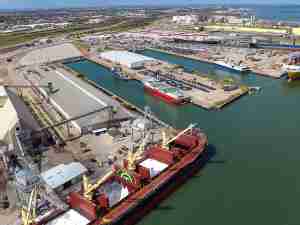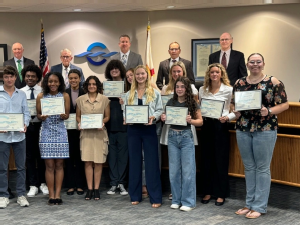The agreed package of measures must result in 10% lower emissions of NOx (nitrogen oxide), PM10 (fine dust) and SO2 (sulphur dioxide) in 2020 than anticipated in the environmental impact statement (EIS) for Maasvlakte 2 (the so-called preferred alternative). In concrete terms, this means a reduction of 25 tonnes of fine dust, 166 tonnes of sulphur dioxide and 380 tonnes of nitrogen oxide per annum. Roughly speaking, that is equal to the emissions from all private cars in the city of Utrecht.
Among the measures in the package are discount on harbour dues for clean ocean-going vessels, low-energy and clean equipment at container terminals, more efficient handling of ship’s visits for maritime shipping and the reduction of emissions from the Port Authority’s own vessels. The introduction of some measures has already begun, whilst others are still at the research or consultation phase. For example, since 1 January 2011, Rotterdam has been giving discount to ships which get a high score on the Environmental Ship Index. But there is still a long way to go when it comes to the use of shore-based power for maritime shipping.
The measures which have now been selected by the Port Authority and Friends of the Earth Netherlands will together lead to a reduction of more than 10%. It is not the end of the world, therefore, if some measures prove infeasible, for unforeseen reasons, or fail to produce the expected results. Furthermore, new measures can be added in the coming years. Flexibility is the motto. Naturally, there will be monitoring to check if the intended results are achieved.
The package of measures by means of which the Port Authority and Friends of the Earth Netherlands wish to achieve the 10% reduction are:
Port Authority’s own vessels.
Some twenty (patrol) vessels are active in the port area on a more or less permanent basis. The Port Authority decides annually which ships’ engines in its own fleet are eligible for reconditioning. The Port Authority determines, on the basis of new developments and experience (pilots), which emission-limiting techniques can be applied.
Dredgers
On average, two dredgers are continually in operation to keep the harbour basins at the right depth. The Port Authority imposes extra requirements against the emission of SO2 and fine dust with new tenders for maintenance dredging work.
Shore-based power for ocean-going vessels
The Port Authority is making quays on Maasvlakte 2 suitable for the installation of shore-based power. This involves creating facilities and areas, so that as soon as shore-based power can be implemented, installation is relatively simple. Shore-based power can be an effective measure (when moored at the quay, ships then use mains electricity rather than their own, more polluting, generators) but










